Retention Marketing Strategies: 12 B2C Plays That Increase CLV

A few years ago, brands lost about $9 for every new customer they acquired. Today, brands are losing closer to $29 in customer acquisition costs. Same audience set and the same channels, but it’s now three times the cost to get their attention.
That’s why the smartest brands are shifting focus toward existing customers— retaining them, expanding their lifetime value, and getting more returns from every acquisition dollar already spent.
Retention marketing uses owned data and owned channels (email, SMS, and on-site experiences) to turn a first-time buyer into a second purchase, a higher AOV, or a loyal repeat customer. When these systems compound, every purchase becomes the trigger for the next one.
In this guide, we cover 12 strategies (not tactics) that drive lifetime value, reduce dependency on paid ads, and make retention the most predictable line on your revenue chart.
Marketing strategies vs. tactics
Retention marketing breaks down when teams confuse strategy with tactics. You can A/B test subject lines, send discounts, or launch referral programs, but if these actions aren’t tied to a larger system, you’re just stacking short-term wins.
To build true customer loyalty, you need a strategy that defines how you retain customers over time, and then pick tactics that deliver on it.
Strategies are long-term systems that help you build stronger customer relationships and increase lifetime value. They give direction to your execution. Some examples include:
- Identity-first retention: Use customer data to connect anonymous traffic to real people.
- Deliverability-first email strategy: Keep inbox placement high so your messages reach loyal customers.
- Lifecycle segmentation strategy: Design communication based on where each customer is in their journey.
Each strategy focuses on growing customer lifetime value (CLV), improving retention rate, and reducing churn. They define how you retain customers, not just what campaign you run.
Retention tactics, on the other hand, are short-term actions that support the strategy. For example:
- Testing a welcome flow variant.
- Running limited-time loyalty programs or special offers.
- Sending follow-up messages or referral program reminders.
These help re-engage existing customers, drive repeat purchases, and support your broader retention marketing strategy, but they’re short-term levers.
If you want to learn how stronger data foundations turn retention strategies into real outcomes, read our blog on how to increase customer retention with better data.
1. First-party identity & customer data unification strategy
Most retention programs fail because they’re built on incomplete data. You might know who bought last week, but would you know if the same person browsed a different product on mobile this morning?
Every channel sees a different version of the same customer, and this fragmentation makes your personalization, reporting, and segmentation inaccurate.
Before any lifecycle flow or loyalty program delivers results, you need a single, unified profile that connects every touchpoint: website, ads, email, support, and purchase data. That’s what a first-party identity and data unification strategy builds: a reliable, consented source of truth for every shopper.
With unified profiles, you can:
- Detect repeat customer base automatically and tailor messaging to their purchase history.
- Exclude current customers from customer acquisition campaigns to control customer acquisition costs (CAC).
- Build precise segments for reactivation, upsell, and cross-sell campaigns.
- Track CLV and retention rate based on real identities, and not cookies or sessions.
It’s also what keeps your retention efforts resilient as privacy rules evolve. For example, brands using Tie’s identity resolution system now recognize up to 90% of returning shoppers across browsers and devices, without relying on third-party cookies. That means fewer data gaps, cleaner measurements, and a stronger base for every retention program you run.
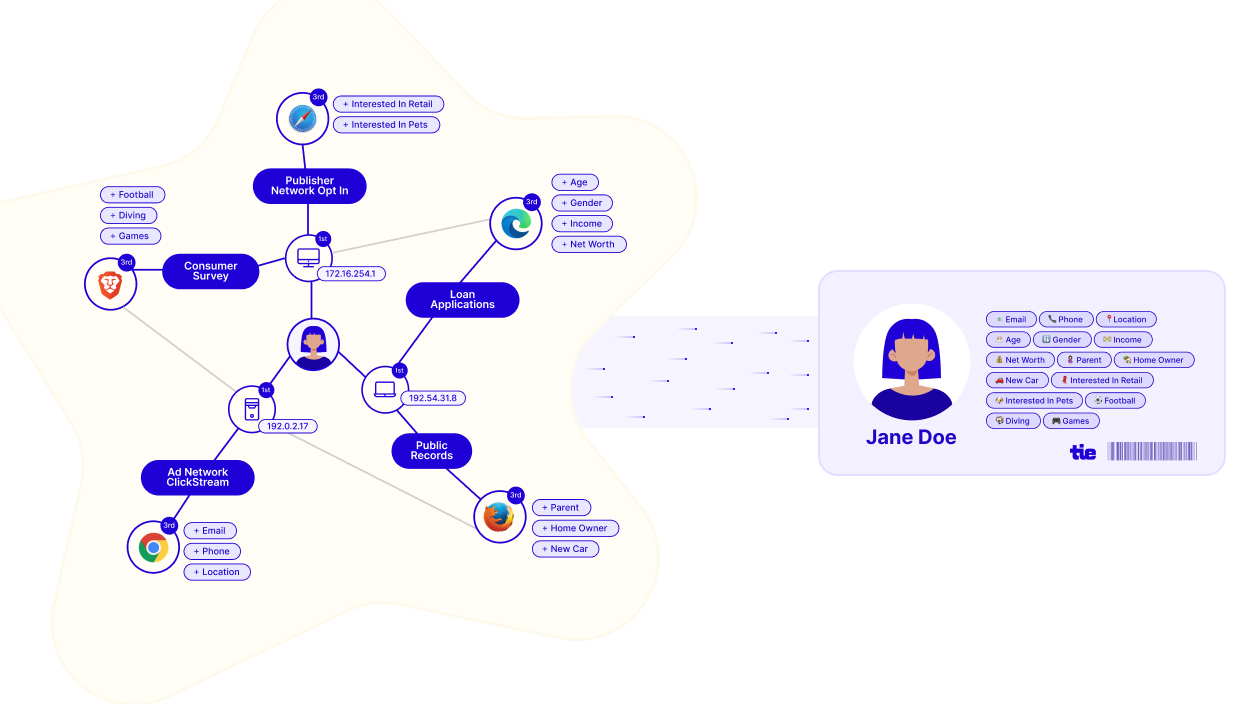
2. Grow owned audiences by uncovering anonymous traffic
Once you unify your data, the next challenge is reach.
You can’t retain people you can’t identify. Most ecommerce sites still rely on generic pop-ups or discount codes to collect emails. Those convert less than 0.5% of visitors. The rest (high-intent browsers who left without subscribing) are lost from every future campaign.
A website visitor identification strategy changes that. Instead of waiting for opt-ins, you identify anonymous visitors in real time, match them to past sessions, and collect consented contact data when customer engagement signals are strongest. This turns passive traffic into an active, addressable audience for your retention programs.
Here’s what it enables for your brand:
- Identify repeat visitors and sync their activity to your ESP within seconds.
- Capture intent-rich leads: people viewing specific product categories or spending time on PDPs.
- Re-engage abandoned cart sessions through personalized email or SMS follow-ups.
- Build audience segments that mirror your most loyal customers, improving every lookalike model.
Many brands now do this with Tie’s visitor identification, which connects high-intent, anonymous traffic to real customer records.
For example, Larsson & Jennings added over 1,000 new email contacts per day, and achieved up to 44% identification rates on key cohorts, without increasing ad spend. It’s a smarter way to convert attention into retention.
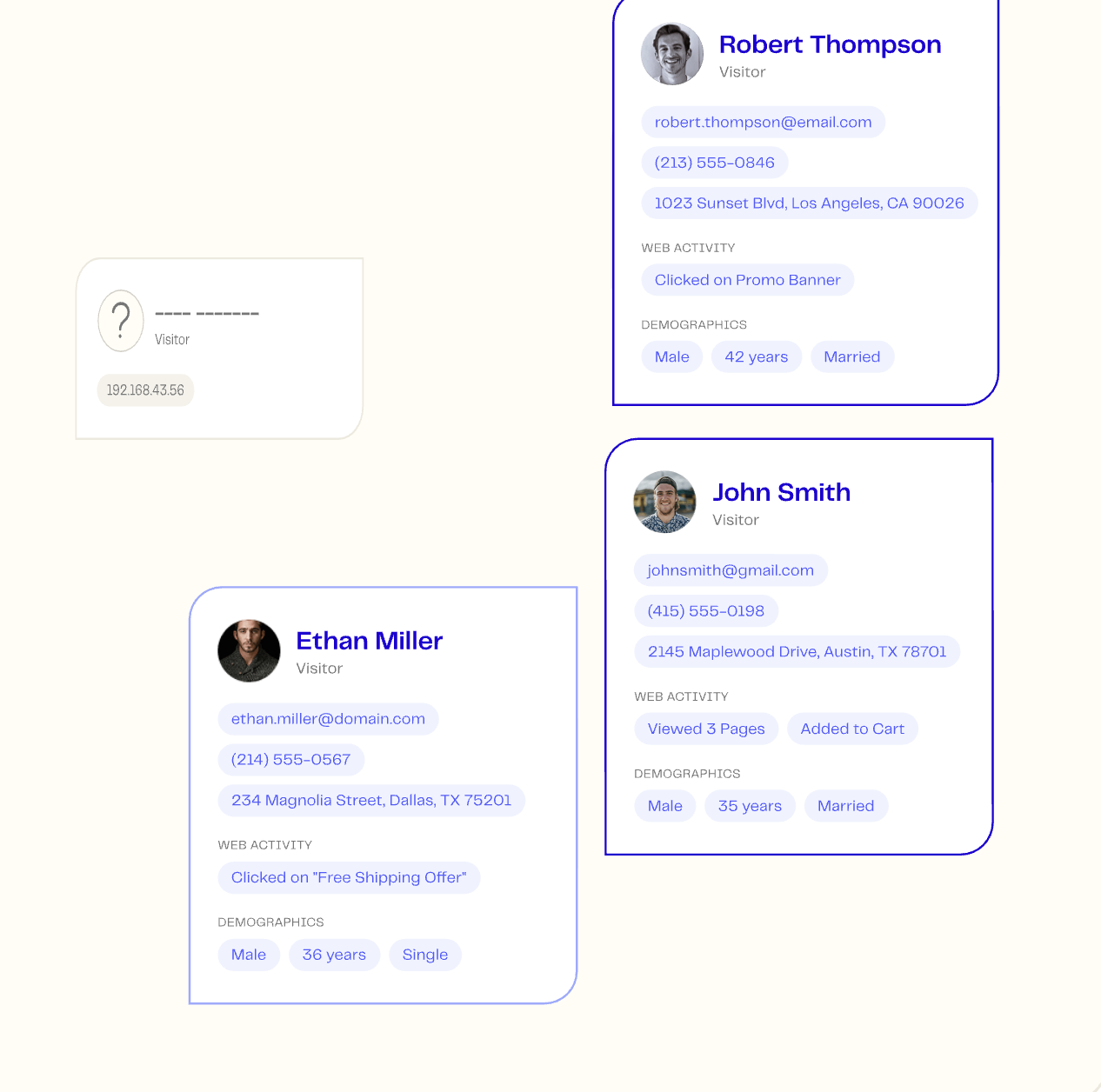
3. Deliverability & inbox placement strategy
You can’t retain customers who never see your emails. Even the most engaging flow fails if it lands in Promotions or Spam. When inbox placement drops, engagement falls, your domain reputation weakens, and every future send performs worse.
A deliverability and inbox placement strategy protects your domain health so your emails consistently land in the Primary inbox, where customers actually read your promotion, click through to your site, and buy.
Here’s how you can build credibility with inbox providers:
- Authenticating your domain (SPF, DKIM, DMARC).
- Warming up new sender profiles gradually.
- Monitoring engagement, unsubscribes, and spam complaints.
- Suppressing inactive contacts before they hurt your score.
When deliverability improves, every retention metric lifts:
- Higher open and click-through rates.
- More repeat purchases from existing customers.
- Better ROI from the same list size.
OluKai, a premium footwear brand, rebuilt its deliverability setup with Tie’s Promo Tab Protection. After this, their inbox placement shifted to Primary within 24 hours. Additionally, CTR rose by 42%, revenue per send climbed 55%, and the brand earned over $55K in incremental sales from just nine A/B campaigns.

4. Lifecycle segmentation & journey orchestration strategy
Once your messages consistently reach the inbox, your next focus is timing: sending the right message at the right stage of the customer journey. A one-size-fits-all campaign doesn’t retain customers. It just reminds them how impersonal marketing can feel.
A lifecycle marketing and journey orchestration strategy breaks your audience into four key stages (new, active, lapsing, and churn risk) and tailors both messaging and merchandising for each. It’s how you move from campaigns to systems.
You start by identifying behavioral triggers:
- New customers need onboarding and first-purchase customer support.
- Active customers respond to cross-sell and loyalty offers.
- Lapsed customers need reminders tied to previous purchase patterns.
- Churn-risk customers often require personal reactivation or time-bound and exclusive offers.
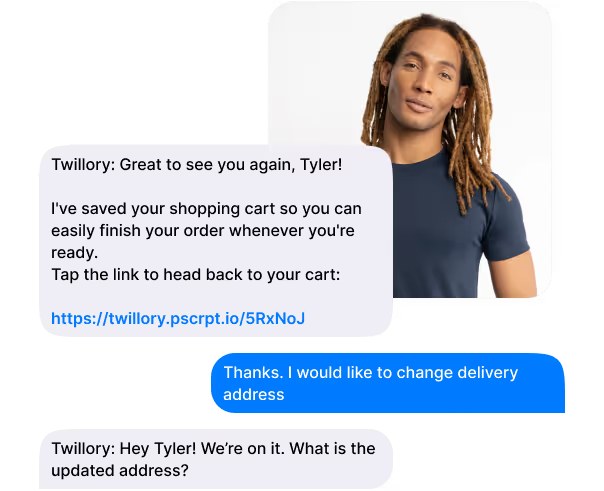
When segmentation and timing align, your messages feel intuitive, not automated. Your retention marketing initiatives become proactive rather than reactive, guiding customers to the next step and reducing drop-offs.
5. Privacy-first consent & preference management strategy
Everything you’ve built so far (data unification, deliverability, and segmentation) depends on trust. And in 2025, that trust comes from transparency. Customers now expect to control what data they share, how often they hear from you, and on which channels.
A privacy-first consent and preference management strategy turns that expectation into an advantage. Instead of collecting data passively, you ask for it directly and prove why it’s worth sharing. This builds a permissioned data layer that’s accurate, compliant, and more durable than any third-party dataset.
Here’s how you put it into practice:
- Collect consent explicitly across all forms, and not just during checkout.
- Centralize opt-ins and preferences across channels so customers never need to unsubscribe twice.
- Communicate your data use clearly: what’s collected, why it’s used, and how it improves customer experience.
Besides protecting compliance, this level of control also improves engagement. Customers who understand your data policy open, click, and convert more often, They trust your brand and choose to stay connected.
6. Personalization governance strategy
By this stage, your audience is defined, your data unified, and your messages reach the inbox. The next challenge is making those notifications worth opening. Most teams overcomplicate this step by chasing hyper-personalization: adding names, birthdays, or past purchases into every template.
It rarely works because hyper-personalization fixates on what changes in the message, not why it matters to the customer. A thousand micro-variants of an email won’t fix weak timing, poor segmentation, or irrelevant recommendations.
A personalization governance strategy helps you focus on what truly shapes retention: behavioral and contextual relevance. It starts with clean data and structured segmentation, understanding customer interactions with your brand, not just who they are.

This approach creates signal-led personalization: clear, context-based, and consistent. Tie’s enrichment and identity data support this by linking behavioral signals like browsing frequency, order intervals, and product bundling patterns to your ESP. It helps you design personalized experiences that feel precise and not performative.
7. Predictive & propensity-driven retention strategy
Once your personalization is grounded in context, the next step is anticipation: knowing who to reach, when to reach them, and why it matters.
A predictive and propensity-driven retention strategy helps you move from reacting to churn to predicting it. These models use behavioral data to forecast purchase likelihood, timing, and engagement probability. Some use cases are:
- Identify customers who will respond to a nudge or offer.
- Predict re-order timing based on purchase intervals.
- Detect early signs of customer churn or disengagement.
- Optimize incentives only for customers who truly need them.
There are 3 types of predictive modeling:
- Propensity model: Finds customers most likely to convert.
- Next-best-offer model: Suggests what to promote next.
- Uplift model: Measures the true impact of personalized offers.

However, the accuracy of these models depends on one foundational aspect: data clarity. If your browsing, purchase, and engagement signals sit in silos, predictions drift. When those touchpoints are unified under one identity, the system learns patterns that actually match customer behavior.
8. Voice-of-Customer (VoC) & feedback-loop strategy
Once your predictive systems are in place, the next step is listening, and not just tracking what customers do, but understanding why they do it. A Voice-of-Customer (VoC) and feedback-loop strategy captures that intent and turns it into actionable insight across teams.
Retention often weakens because feedback gets lost between departments. Marketing hears what customers click, but product and support hear what they feel. Unless that data moves across the organization, you fix symptoms and not causes.
The goal is to build a continuous loop:
- Capture feedback across surveys, reviews, and post-purchase messages.
- Route insights to the teams that can act: product, CX, or lifecycle marketing.
- Document patterns in a shared knowledge base.
- Close the loop with customers when changes are implemented.
When handled right, VoC programs reduce churn before it starts. Fast, omnichannel support and self-service options reinforce trust, and customers who feel heard rarely leave.
Tie’s identity enrichment can power this loop by linking customer feedback to behavior and purchase history. When sentiment data connects back to identity, you see which cohorts are at risk and which changes create real loyalty.
9. Omnichannel owned-media continuity strategy
Even the best retention strategy fails if your channels operate in silos.
An omnichannel owned-media continuity strategy keeps that experience consistent across every owned touchpoint: email, SMS, programmatic, or even direct mail. The goal is simple: deliver the right cadence, suppress redundant messages, and make each channel reinforce the others instead of competing for attention.
You do this by:
- Syncing audience segments and suppression lists across tools.
- Aligning content frequency between email, SMS, and paid media.
- Using behavioral triggers (not just campaign calendars) to drive outreach.
- Maintaining a consistent creative tone and logic across all touchpoints.
With orchestration in place, your retention marketing becomes channel-agnostic. Each customer gets a coherent experience regardless of where they engage, and you recover value from your owned audiences instead of constantly relying on paid reacquisition.
10. Content-led retention strategy
When most brands think about retention, they think about flows, not stories. But after you’ve built segmentation and predictive systems, content becomes your edge because it shapes how customers feel between purchases.
A content-led retention strategy uses editorial, education, and product context to reduce uncertainty, answer objections, and accelerate the next sale. Every piece of content should move the customer from hesitation to confidence.
You build this by combining editorial value with merchandising logic:
- Education: Show how to use, care for, or style the product to extend value.
- Proof: Share reviews, creator collaborations, or customer satisfaction stories to build trust.
- Context: Connect every story to a relevant collection or upcoming restock.
When content is layered into lifecycle journeys, it keeps your audience active even outside buying moments. It also gives predictive systems more signals, like which topics engage, which convert, and which stall.
Tie’s enriched attributes and browsing signals help you choose themes by segment. For example, customers with long purchase gaps might see “product care” content, while high-frequency buyers might get “new drop” features.
11. Retention measurement & KPI governance strategy
No retention strategy works without clear measurement. Yet most teams still report customer success on vanity metrics, such as open rates, unsubscribes, or generic revenue lifts, without tying results to real customer value.
A retention measurement and KPI governance strategy standardizes how you track performance, so every team speaks the same language.
Core retention KPIs to benchmark:
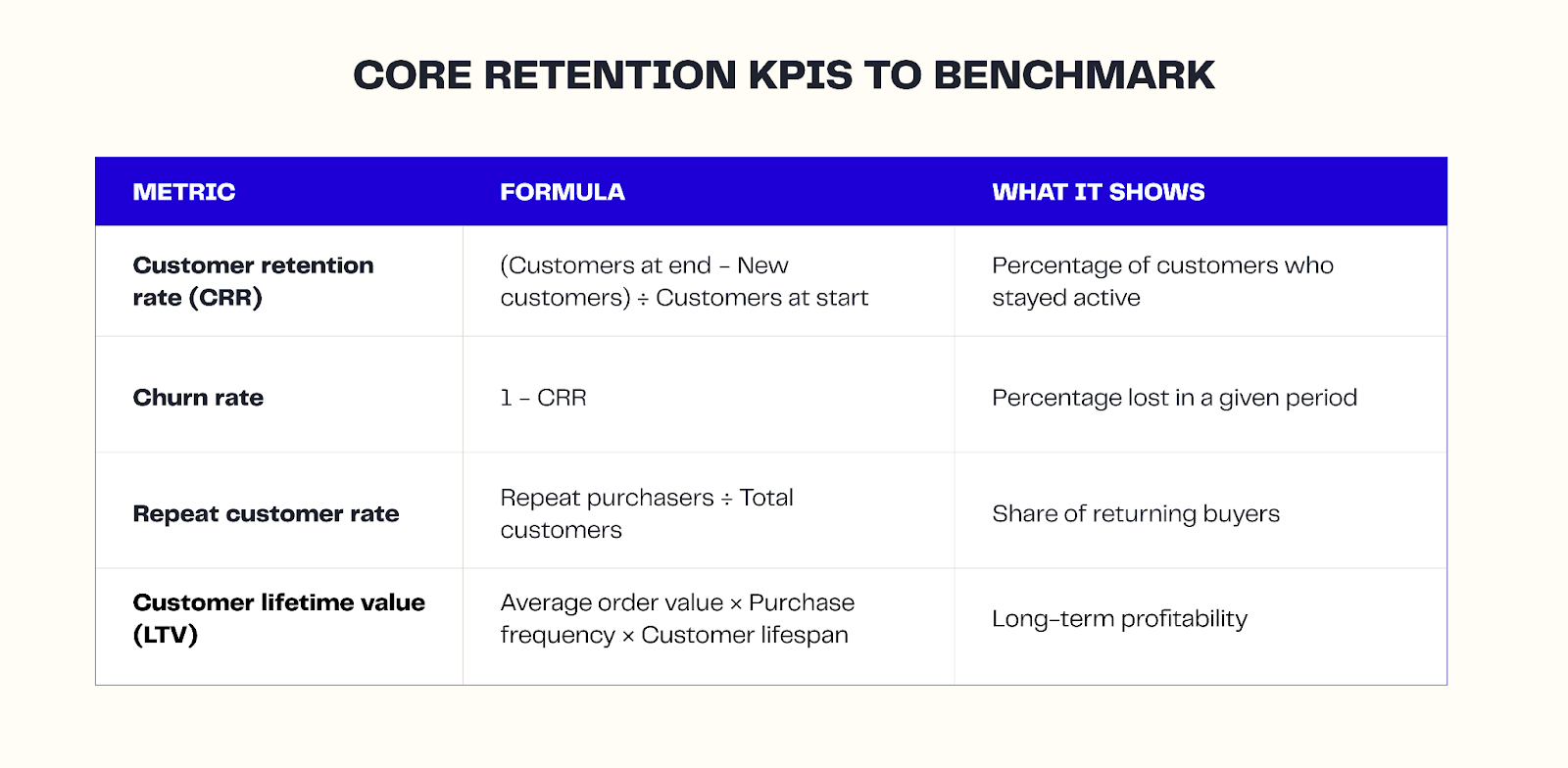
You track these by cohort, not campaign. For example, comparing, say, “Jan-acquired” vs “Apr-acquired” customers shows whether your retention system improves with each cycle, something campaign metrics can’t reveal.
12. Tough-market cost discipline strategy (CAC vs LTV)
In volatile markets, acquisition hides less and costs more. The brands that stay profitable aren’t the ones spending heavily, but the ones that are reallocating intelligently.
A tough-market cost discipline strategy shifts budget from acquisition-first spending to retention levers that expand customer lifetime value (LTV). The math is simple: if CAC rises, you win by making every customer worth more.
That starts with consolidating customer data, because retention efficiency depends on visibility: knowing where customers come from, when they lapse, and what keeps them engaged.
Your focus areas:
- Owned audiences: Turn website visitors into known contacts you can re-engage directly.
- Deliverability: Protect domain health and inbox reach to improve ROI without extra spend.
- Identity resolution: Unify data across sessions so every message reaches a real person, not a duplicate record.
OluKai increased revenue per send by 55% and click-through rates by 42%, without touching creative, segmentation, or cadence, after shifting inbox placement from Promotions to Primary with Promo Tab Protection. The change took less than a day to implement and delivered over $55,000 in incremental revenue across nine marketing campaigns.
Similarly, at G.O.A.T Foods, the impact was just as direct. With Tie’s attribution framework, the team replaced inflated metrics with verified results, linking upper-funnel campaigns, like national TV, to real revenue for the first time. By unifying identity and deliverability data, they gained full confidence in what was driving incremental sales, not just list growth.

Real-brand results with identity-first retention
When acquisition gets expensive, the brands that win are the ones turning what they already have into growth. Here are three examples that show how data accuracy and deliverability, not discounts or bigger budgets, created measurable gains in revenue and reach.
CARIUMA
CARIUMA, the sustainable sneaker brand, wanted to reach high-intent visitors who kept browsing but never subscribed. Using Tie’s identity engine, they identified 37,829 anonymous visitors and linked them to verified profiles.
That one change led to 7,272 new purchases and a 10% lift in total revenue without running discounts or adding new campaigns.
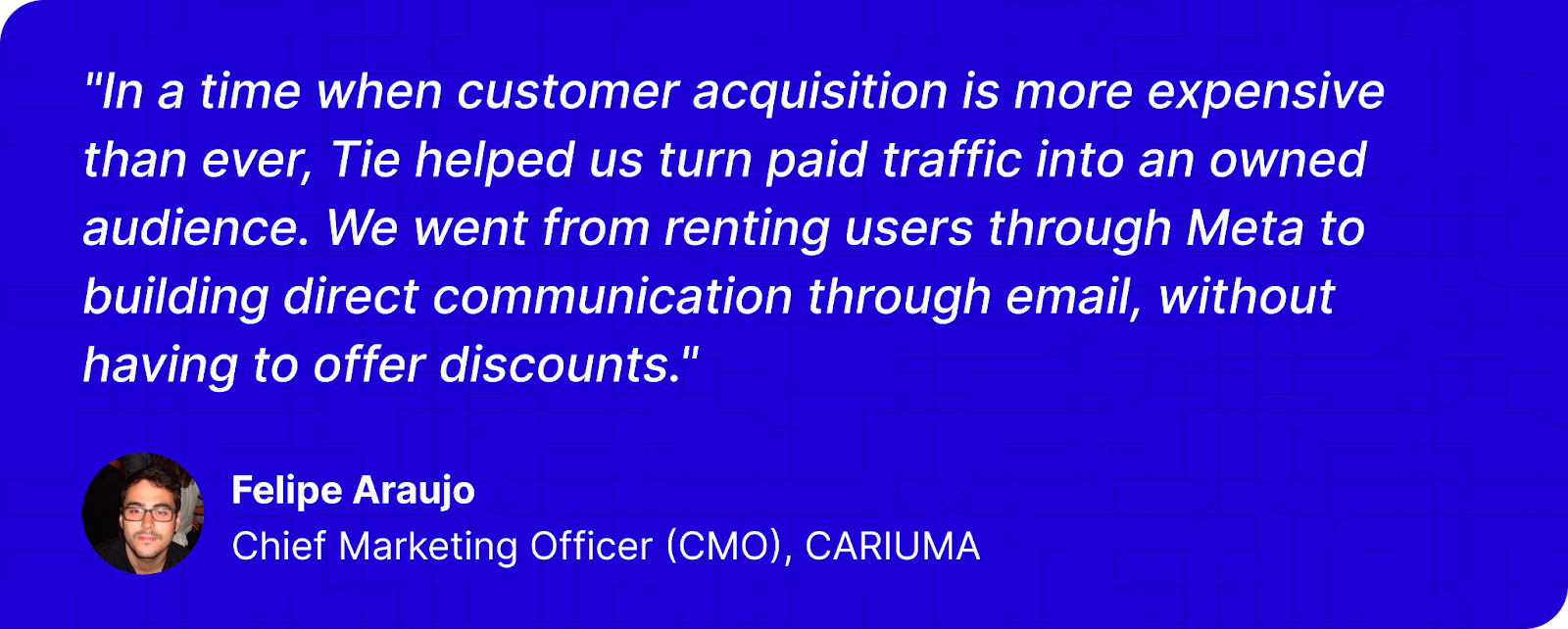
OluKai
OluKai’s email marketing performance plateaued because its messages were landing in the Promotions tab. With Promo Tab Protection, inbox placement shifted to Primary in less than 24 hours.
They didn’t touch creative or targeting, yet CTR jumped 42%, revenue per send rose 55%, and the brand added $55,000 in incremental revenue across just nine tests. A simple deliverability improvement turned a strong campaign into a profitable one.

G.O.A.T Foods
G.O.A.T Foods wanted to clean up their attribution and measure what was actually driving incremental sales. After switching to Tie, integration took under an hour. The difference was immediate: attribution became transparent, and every conversion tied back to a verified identity.
The team went on to record $596,383 in net new revenue, 10,140 new orders, and 2.5M new shoppers identified, all tracked with clarity they never had before. For the first time, they could link upper-funnel efforts, including national TV, to real revenue instead of modeled estimates.

Frequently asked strategy questions
What is a retention marketing strategy vs. tactics?
A strategy is the long-term approach that defines how your retention engine works. For example, lifecycle segmentation, deliverability governance, or personalization frameworks. Whereas a tactic is the execution: the actual welcome flow, A/B test, or reactivation campaign that runs under that strategy.
What are the best customer retention strategies for DTC brands?
The strongest DTC retention programs focus on three pillars:
- Data: Identity resolution, customer data unification, and predictive insights
- Delivery: Inbox placement, channel orchestration, and suppression accuracy
- Dialogue: Lifecycle segmentation, VoC programs, and omnichannel continuity
How do I centralize customer data for retention?
Bring all first-party data, like transactions, browsing, and engagement, into one place. Use identity resolution to connect devices and sessions to a single shopper profile. Then sync those unified profiles with your ESP or CDP so every retention flow draws from the same, accurate source. When you know exactly who you’re speaking to, every channel works smarter.
Does email deliverability really affect retention revenue?
Yes, email deliverability does affect retention revenue since visibility drives advocacy. If your messages don’t reach the Primary inbox, even your most loyal customers won’t engage.
When OluKai implemented Promo Tab Protection, inbox placement improved within 24 hours, resulting in 42% higher CTR, 55% more revenue per send, and $55K+ incremental sales from nine campaigns.
What KPIs should a retention strategy track?
Focus on metrics that show long-term customer health, such as:
- Retention rate = (Customers at end of period – New customers) ÷ Customers at start of period.
- Churn rate = 1 – Retention rate.
- Repeat customer rate = Repeat purchasers ÷ Total customers.
- Customer lifetime value (LTV) = Average order value × Purchase frequency × Average lifespan.
Set baseline cohorts, then track improvement month over month instead of looking at campaign-level lifts.
How can I improve retention without discounting?
You shift the focus from “offers” to “ownership”:
- Grow owned audiences from anonymous traffic.
- Improve deliverability and inbox placement.
- Segment by lifecycle and predict timing.
Brands like CARIUMA grew retention revenue by 10% without relying on discounts, just better data and targeting.
Are hyper-personalized emails a good strategy?
Only when backed by accurate behavioral data. Without clean inputs, hyper-personalization adds noise, and not value. Focus on contextual signals, such as browsing, timing, and product affinity, rather than name-based customization.
What strategy works best in a tough market?
When acquisition costs rise, retention becomes your safety net. Shift your focus to:
- Strengthening owned data and channel deliverability.
- Using lifecycle orchestration to guide customers naturally.
- Applying predictive targeting to spend only where response is likely.






